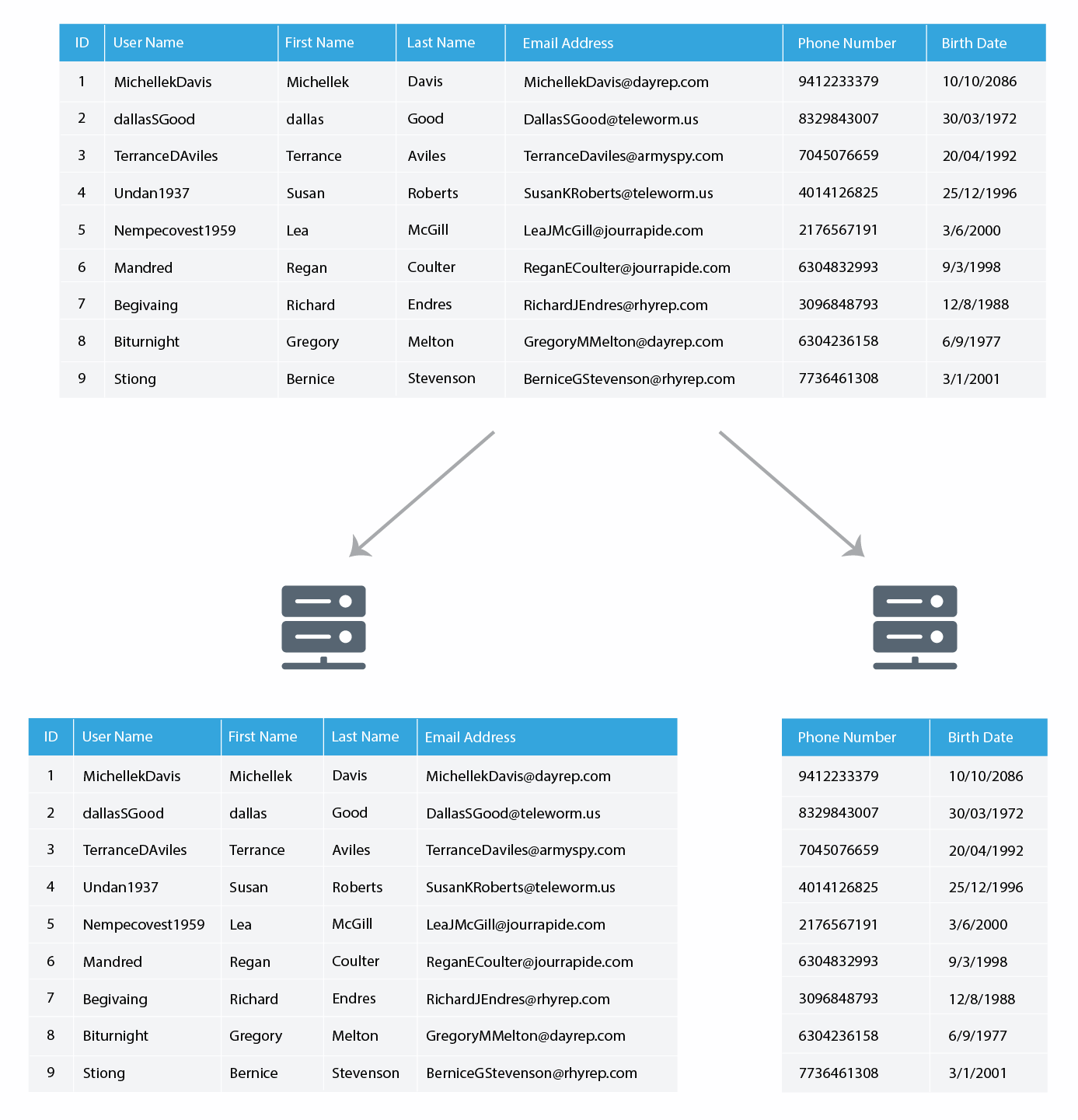Vertical partitioning
As stated earlier, vertical partitioning divides the columns into multiple file groups.
Vertical partitioning can be achieved by the following:
- Row splitting into multiple file groups that can be stored at multiple locations
- Organizing data into multiple tables by breaking large data tables into smaller database tables
In row splitting, columns from one table are vertically separated into multiple file groups. When there are large datasets stored in a table, it may be difficult to manage large database files on a single location or server. So we can divide some of the columns from the database into a separate file group where can be managed on a separate disk.
Consider the following screenshot for vertical partitioning of the user table. As stated earlier, the database table, users, has been split into two separate partitions stored on different storage.
There can be more than two partitions of the table:

Vertical partitioning of a single table into multiple file groups is...
























































